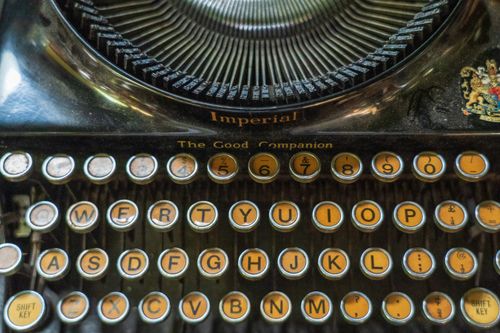Qwerty is arguably the most popular English keyboard layout. However, not many people have a good grasp of the history behind this type of keyboard layout. Of course, someone or a group came together to make this happen. One of the things to note was that the Qwerty keyboard layout came as an idea to one person before it extended to become a reality. The history behind it is even more appealing.
Christopher Latham Sholes, a Wisconsin newspaper publisher and former state senator, got the idea of inventing this type of keyboard layout sometime in 1866. But before then, another invention of his played a massive role in getting the idea of inventing the qwerty keyboard.
He co-invented an automated machine to number coupons and tickets. Previously, this was a work that required manual inscriptions by hand. When they were unveiling this product, his fellow inventor made a suggestion. Carlos Glidden made the suggestion of Sholes inventing the keyboard.
According to historians, he said, "Why can’t you make a machine that will print letters as well as figures?" Sholes liked the idea, as did S.W. Soule, a Milwaukee printer.
Since there was an agreement of interest between the three, they moved on to start working on their new invention. They set up their shop, or what could be called their experiment center, on State Street by the Milwaukee River. This was where they made several designs and underwent crucial work that led to the successful design of the QWERTY keyboard layout. But before they arrived at this, one of them, S.W. Soule, gave up along the way and went on with his other businesses. But the two continued with their work and arrived at some destination.
The initial version of their invention had some flaws compared to modern keyboards, but it was a significant step forward in typing technology. Sholes and Glidden's early prototype featured a semi-sequential keyboard layout, with all letters in uppercase. It's worth noting that the capital letter "I" served the dual purpose of also acting as the number "1".
Basically, the first prototype of their keyboard looked like this:
3 5 7 9 N O P Q R S T U V W X Y Z
2 4 6 8 . A B C D E F G H I J K L M
How Did They Arrive at QWERTY
These inventors persevered beyond the initial prototype and made numerous significant improvements to arrive at the final keyboard layout. Over the years, one question that has generated conflicting answers is how these inventors came up with the famous qwerty keyboard layout.

Some experts with good knowledge of history say it was because it solved a jamming problem by spacing out the most common letters in English. Others believe that it helped telegraphists avoid common errors when transcribing Morse code.
Nevertheless, their new keyboard enjoyed a wide range of commercial success. The Sholes and Glidden typewriter came to market in 1874. E. Remington & Sons became the manufacturers and marketers of this typewriter, which was a massive success for them. From the typewriters, the qwerty keyboard layout is now part of high-end phones, laptops, and other devices.




